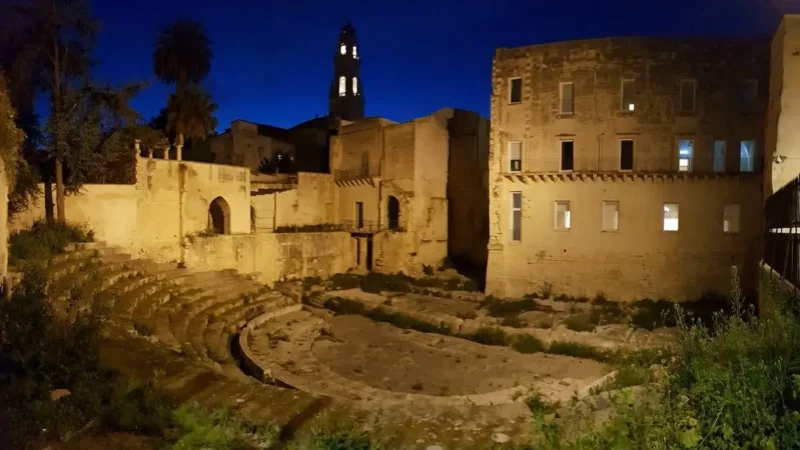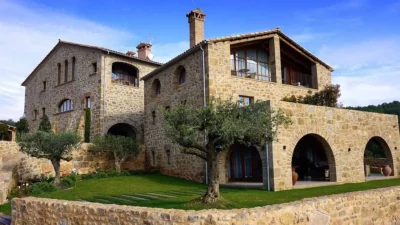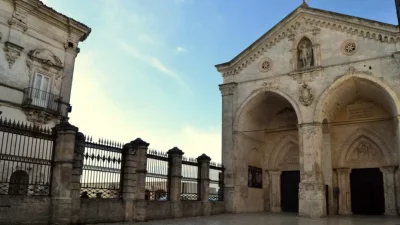As you approach the site, the scale and grandeur of the Roman Theater immediately captivate the senses. The theater’s semicircular shape, with its intricate rows of seating carved into the hillside, creates a sense of awe and wonder. The sheer size of the structure is a testament to the engineering prowess of the Romans, who were able to construct such a monumental building using only the tools and materials available at the time.
Table of Contents
Architectural Marvels and Social Hierarchy
One of the most striking features of the Roman Theater of Lecce is the attention to detail that can be seen in its design. The seating area, known as the cavea, is divided into sections, with each section accommodating a different social class. The uppermost rows were reserved for the common people, while the lower sections were occupied by the wealthy and the elite. This hierarchical arrangement was a common feature of Roman theaters, reflecting the social structure of the time.
Uncovering the Theater’s Past Grandeur
As visitors explore the site, they can also admire the ornate architectural elements that adorn the theater. The scaenae frons, or the stage building, was once adorned with intricate columns, statues, and other decorative elements, providing a grand and impressive backdrop for the performances that took place on the stage. Although much of this ornate decoration has been lost over the centuries, the remaining fragments and ruins offer a tantalizing glimpse into the theater’s former glory.
The Enduring Significance of the Roman Theater
One of the most fascinating aspects of the Roman Theater of Lecce is its continued relevance and importance in the modern world. Despite the passage of time, the theater has maintained its place as a significant cultural and historical landmark, inspiring scholars, archaeologists, and visitors alike to unravel its secrets and better understand the daily lives and customs of the ancient Romans.
A Hub for Cultural Experiences
Today, the Roman Theater of Lecce serves as a hub for cultural events and activities, hosting concerts, performances, and festivals that bring the site to life. Visitors can explore the theater’s ruined corridors and underground passageways, imagining the bustling activity and excitement that once filled the space as audiences gathered to witness the plays, music, and spectacles that were presented there.
Exploring the Roman Ruins of Lecce
In addition to the theater itself, the surrounding area of Lecce is rich in Roman ruins and archaeological sites, offering visitors a comprehensive insight into the region’s ancient past. The nearby Obelisk of Saint Oronzo, for example, is another remarkable Roman structure that stands as a testament to the enduring influence of the Roman Empire in this part of Italy.
Captivating the Senses and the Imagination
As you explore the Roman Theater of Lecce, it is impossible not to be captivated by the sheer scale and beauty of the structure. The theater’s ability to transport visitors back in time, to a world of ancient culture and entertainment, is truly remarkable. Whether you are a history buff, an architecture enthusiast, or simply someone who appreciates the wonders of the past, the Roman Theater of Lecce is a must-visit destination that will leave a lasting impression on all who experience it.
Conclusion: A Remarkable Archaeological Treasure
In conclusion, the Roman Theater of Lecce is a truly remarkable and captivating archaeological site that offers a unique opportunity to explore the rich cultural heritage of the Roman Empire. Through its well-preserved ruins and ongoing archaeological research, this ancient structure continues to enchant and inspire visitors from around the world, inviting them to step back in time and immerse themselves in the captivating world of the Romans.
Start planning your Puglia and Salento adventure today with our seamless travel tools and expert guidance. Discover the wonders that await in this enchanting corner of Italy.





